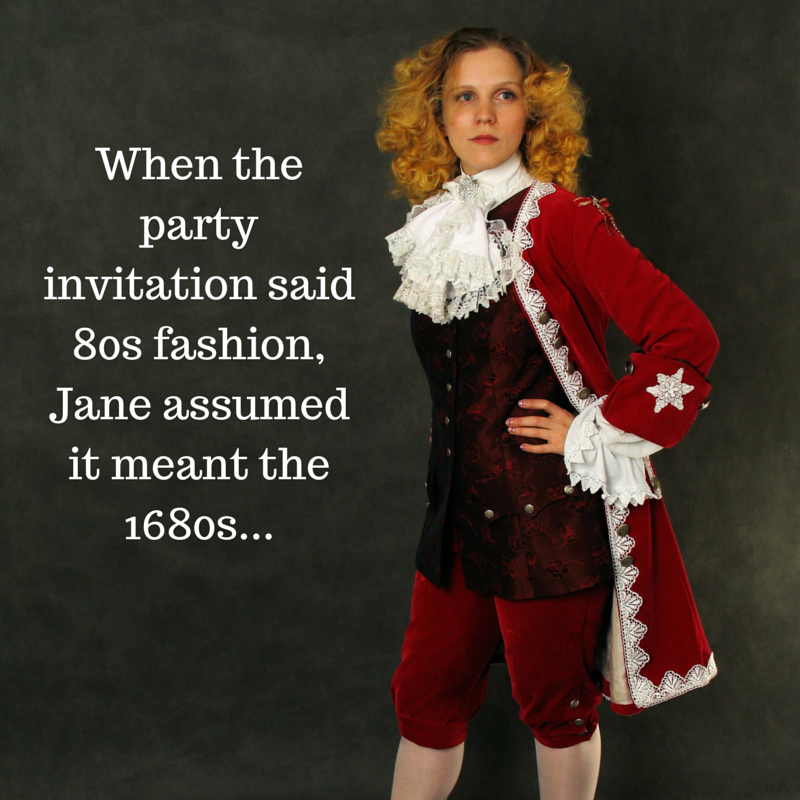
There’s nothing wrong with learning from someone else’s marketing style, as long as it doesn’t become all “Single White Female.”
Last year when I was in the middle of the launch for my copywriting membership course, I received an email from a successful and smart marketing lady-friend of mine:
“I see someone else bought [marketing expert]’s [marketing book]! I’m using it too, let me know how you get on.”
It made me laugh because when you spend time in marketing circles you see similar techniques being employed in the race of testing what’s working today.
And this is nothing new. Innovation is seeing what others have done and building on it. Like Isaac Newton said:
If I have seen further, it is by standing on the shoulder of giants.
Which we Brits love so much we have it on our £2 coins.
Like I say, nothing wrong with seeing what other people have done and applying it to your situation. But there is a risk in this practice, especially when it comes to copywriting:
The dangers of a swipe file
One of the first rules of copywriting is that you should build a Swipe File. A Swipe file contains any copy or marketing that you’ve seen that you like and want to use for inspiration in the future.
The key word there is: “Inspiration.”
You have to be able to adapt what you see to your own style. If you don’t, you risk your copy sounding clunky or outdated. A bit like wearing someone else’s clothes from a bygone era. They don’t fit, it feels uncomfortable and lumps and bumps will show.
Just recently I noticed an advert in my Facebook newsfeed. It was from a marketer, (let’s call him Marketer A) which is no surprise but what stood out was that the copy he used was exactly the same as copy I’d seen another marketer (let’s call him Marketer B – confusing much?) not only use, but teach others to use in an online marketing class.
The phrase was:
Did life get in the way?
And then it explained how I might have ‘missed’ a previous offer / advert that he’d displayed to me in Facebook.
It did catch my eye, but probably not for the right reasons. In fact, because I’d seen the exact same technique before, it actually made me think:
Well, if Marketer A is copying Marketer B, then it’s probably Marketer B that I should be learning from.
Ouch.
By copying someone else style word for, a prospect may be tempted to walk into the arms of a competitor.
Why does this happen? Because it works (huh?)
I’m not here to say he shouldn’t have copied someone else because this might be working really well to convert people in his Facebook Adverts campaign. And if it’s working, that’s the main thing. As long as there’s no copyright infringement, this guy is perfectly fine to use whatever copy he likes to get the best conversions.
And I’m all for seeing what’s working today and trying it out in your own marketing. But be careful. The odd phrase swiped here and there might be okay, but if you’re copying someone’s style and it doesn’t:
- Fit your brand or personality
- Suit the personality of your audience
- Sound like you
It’s going to make your copy sound not quite right.
Are there magic words…?
As you look at adverts and digital marketing, you will begin to notice trends, certain phrases and words that are used to get attention, build engagement, and catch peoples eyes. This is all part of being a top class copywriter, knowing what’s working in the industry today.
I do a lot of copywriting training and on rare occasions I will have attendees who are simply looking for the ‘magic words’ that are gong to convert their leads into sales just like that.
How long should a subject like be?
Should I personalise email subject lines?
What’s the best words to use for a call-to-action?
I always see their faces drop slightly when I begin with “it depends.” Because when it comes to copywriting there is no definitive answer when it comes to what words you should be using. Yes there are studies on the best words to use in social media, and Michael Aagaard of Content Verve has shown how choosing certain words in calls to action can drastically change conversions.
And yes, if you want to stay ahead of the game, you need to know these words and phrases but more importantly…
…Recognise the principles behind them
Let’s take the example from the Facebook Advert:
Did life get in the way?
Why has this been working so well in campaigns that people are copying it verbatim?
My theory is this:
- It’s conversational, it matches the informal style we expect when we use Facebook (mostly to catch up with friends, not look for adverts)
- It asks a question, which psychologically triggers a need to answer
- It seems to show an interest in the reader’s life – it’s focus is on the reader and what has been happening to him or her
- It’s friendly – it’s not a heavy sell such as “did you miss out on this offer?!”
What I want you to do is study the magic words, but ask yourself why you think they work, and then try to create your own versions based on the principles behind them. This does 2 things:
It keeps your copywriting mind sharp
It removes the risk that someone will read your marketing and think: “Oh, I saw so-and-so use this, they’re obviously just a cheap imitation.”
You want to be the best you, not a second-rate version of someone else.
Oh, and don’t forget…
…Know when the magic words are headed for extinction
If you find that using “Now” in your calls to action is working, keep using it. But don’t be afraid to test it against other words once in a while to see if it still has pulling power, or if its power is fading.
If you just copy what seems to be working for others, without trying to develop your own words and phrases to test for your audience, you risk writing copy that is outdated, clunky and looks unprofessional.
Do build a strong swipe file, do read a lot of marketing copy, but use it to stand on the shoulders of marketing giants so that you can make even larger strides.
Good luck!
What about you? Are there words and phrases you see in marketing that seem outdated? Have you seen someone copy someone else style and been put off? Let me know in the comments below!

This is SO true! I get frustrated when people ask for a list of “power words” … and even more frustrated when copywriters (who should know better) share them. The words work but only for some markets; for instance, some audiences would run if you started saying you’re going to “crush” something.
This is why branding starts with the content … I just did a post on “invisible branding,” with the idea that your style brands you as much as your colors. Can’t be copied and not sure you can set out to create a style, consciously.
Thanks for saying it!
Exactly Cathy. People will always want shortcuts and while there are faster, more efficient ways of writing copy, it’s not about stock phrases – unless you’ve spent time working out which phrases your specific audience love. 🙂
What a thought provoking post Amy,
I’ve also been seeing lots of this on the internet.
I agree with you that swipe files are meant to serve as inspiration but it seems many of us don’t really know that and that’s why we usually end up copying each other verbatim.
We need to be creative because this is the only way we can craft out our own unique words after seeing what’s working for others.
I also subscribe to the idea of testing different types of CTA so we’ll be able to know what’s working and what’s not working.
Thanks for sharing
Thanks Theodore! Putting your unique stamp on your writing sets you apart as a copywriter as well. What’s the saying they have in music? Imitate, replicate then innovate? Something along those lines, it’s the innovation that stops you sounding like everyone else!